Day 2 of a three day Autumn Migration & Wader Spectacular tour. It was a lovely day, bright with sunny intervals and hazy high cloud, though cooler in the light-moderate wind which had swung round to the N today.
On our way down to the coast this morning, a Green Woodpecker flew up from the side of the road as we passed. A little further on, we were being tailgated by someone in a hurry, so we pulled over by some barns and looked down the line of buildings to see a Little Owl perched under the ridge of one of the roofs. So we got out and set up the scope on it. The Little Owl was warming itself in the morning sun, and gave us no more than a passing glance.
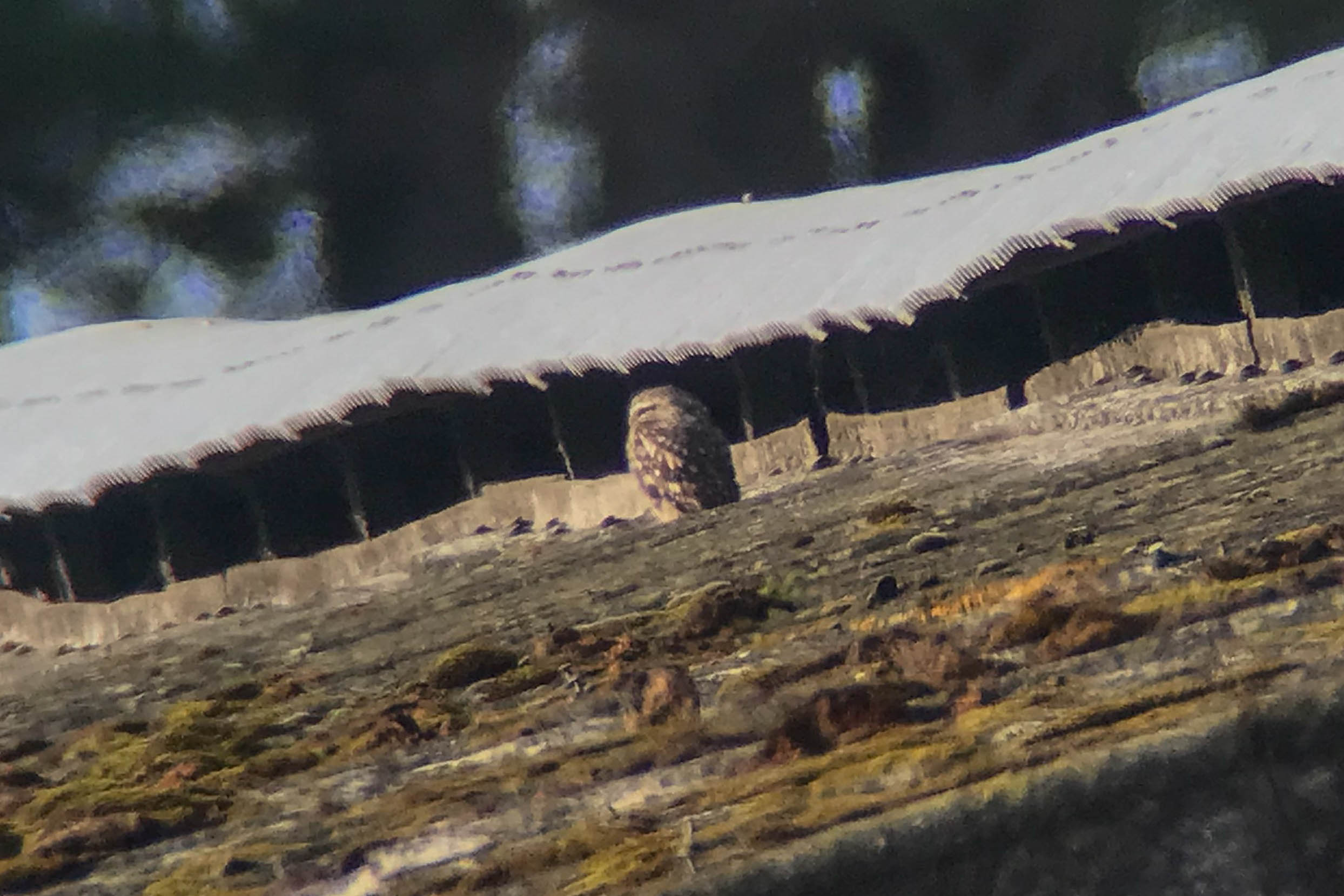
Our first destination for the morning was Stiffkey Greens. It was a big high tide this morning and the saltmarsh was completely flooded. As we got out of the minibus and started to scan the water, a couple of Greenshank flew past calling. The waders were all struggling to find somewhere to roost today. Two Common Sandpipers flew round and landed on a suaeda bush which was poking out of the water.
There were lots of Oystercatchers and Curlew roosting on the shingle islands out on the Binks. More Redshanks were scattered around all over the saltmarsh, perched in the tops of many of the suaeda bushes. In one group, we could see a noticeably paler bird with a longer bill, a lone Spotted Redshank. There were even Redshanks roosting on the handrail of one of the saltmarsh bridges away to the east and several Turnstones were roosting on the gunwales of one of the old boats moored out on the back of the marsh.
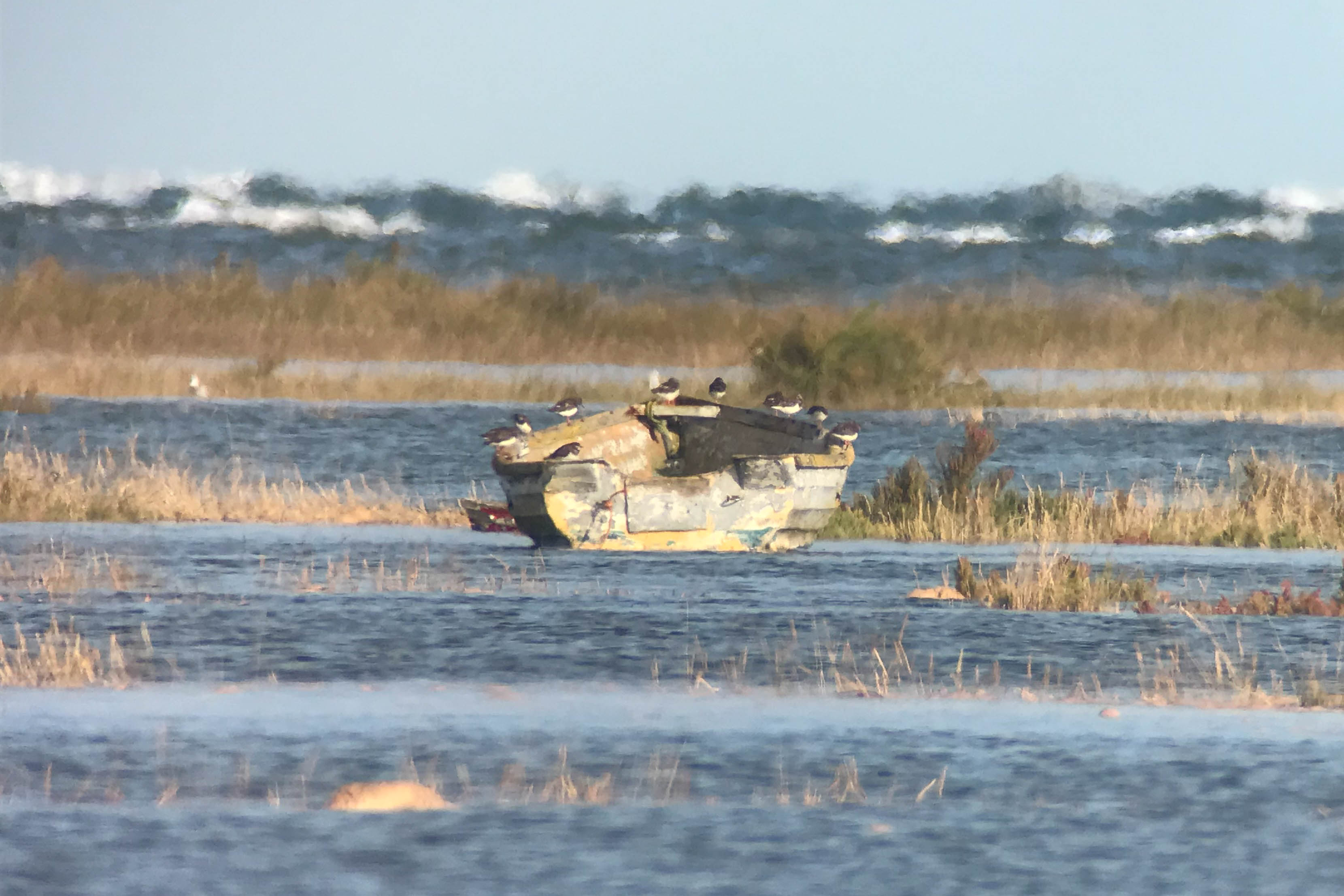
A line of five Brent Geese flew across, out at the back of the saltmarsh, and a Kingfisher disappeared off east. Lots of House Martins were hawking back and forth out over the water too. There were Little Egrets scattered liberally all over the view. A migrant Rush Veneer moth (Nomophila noctuella) flew up out the grass at our feet.
There was a lot to see just from here, but eventually we decided to tear ourselves away, and set off along the coast path to the west. A Wall butterfly basking on the path was the first of many we would see today. Several Skylarks, pushed in off the saltmarsh by the tide, came up from the stubble fields behind.
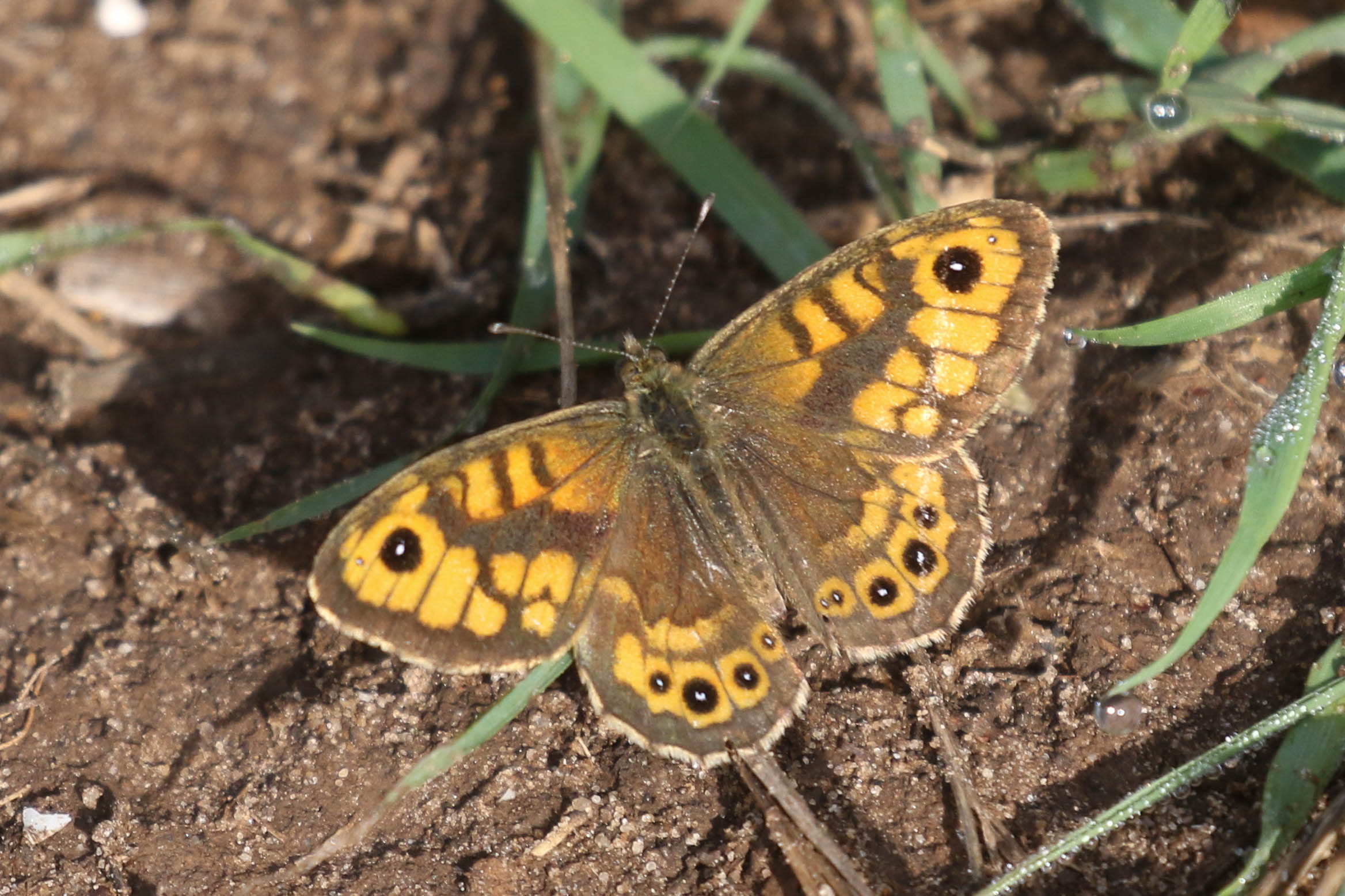
There were lots of House Sparrows in the brambles along the start of the path. We stopped to scan the bushes and found a Garden Warbler perched up in an elder with a several Dunnocks. A couple of Common Whitethroats appeared too and one perched up nicely in the top of a large hawthorn.
Further on, something flicked across the track ahead of us and disappeared into the bushes the other side. We stopped to see if it would come out again, but there were lots of dog walkers along here today and it had disappeared. We walked on and as we got to the thicker bushes ahead of the whirligig we noticed some movement in the trees, a Spotted Flycatcher. It was hard to see in the branches and quickly disappeared deeper in. We stood and waited and after a while it made a quick sally out above the bushes, then flew out back the way we had come. We tried walking back but couldn’t find it again.
There were several Blackcaps in the bushes here too and as we walked round onto the whirligig path, a Lesser Whitethroat flew out and landed in a low briar ahead of us. We looked back along the other side of the bushes by the path, but there was no further sign of the Spotted Flycatcher, just several Linnets perched up in the sunshine.
From the far end of the circular path, we stopped to scan the saltmarsh again. Three Greenshanks flew round with a couple of Ruff, looking to find somewhere to land, and another Greenshank was picking round the top of a submerged suaeda bush. One of the group spotted a single Bar-tailed Godwit roosting in the top of another bush with three Grey Plover.
Out on Stiffkey Binks, we could see several Grey Plover now too, some still sporting the remains of their black summer bellies. There was a large flock of ducks on the water in front, mostly Pintail and Wigeon, accompanied by a couple more Brent Geese. Another small flock of Pintail flew across in distance. Two Stock Doves flew past with a single Woodpigeon.
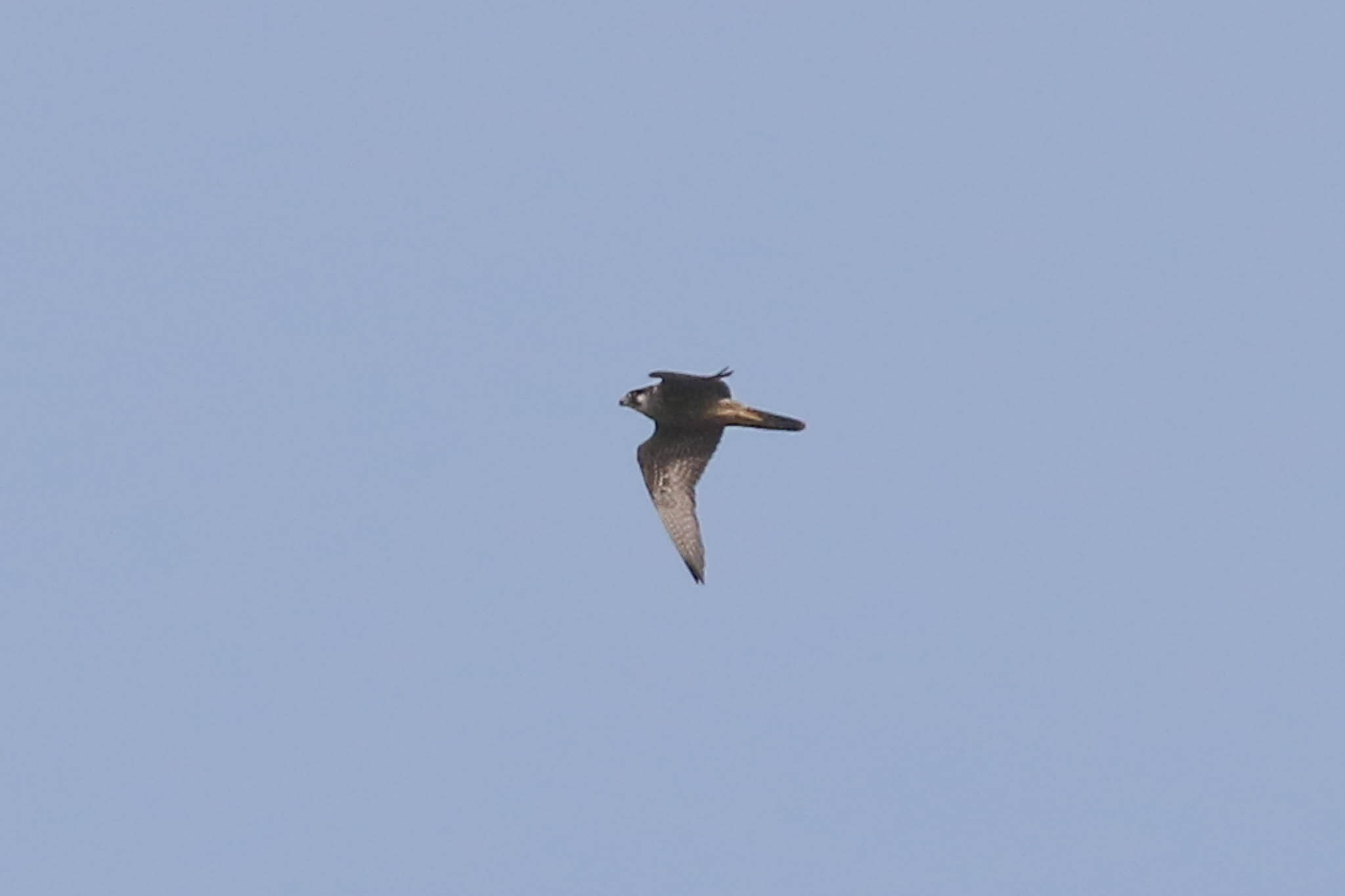
We could hear Golden Plover calling from the fields behind, but suddenly there was a whoosh of wings and a large flock came low over our heads and out over the saltmarsh, pursued by a Peregrine! The Peregrine, a juvenile, broke off and disappeared off west, before flying back east past us shortly afterwards and chasing low over the water. It probably still didn’t quite know what it was doing.
On the walk back, the bushes were much quieter now. We drove west along the coast to North Point next, to have a quick look at the pools there. Scanning the field by the parking area, we found four Wheatears feeding out on the ground, one a male sporting a bolder black face mask. When a big flock of Swallows appeared over the fields on the edge of Wells, we looked over to see a Sparrowhawk circling up below them.
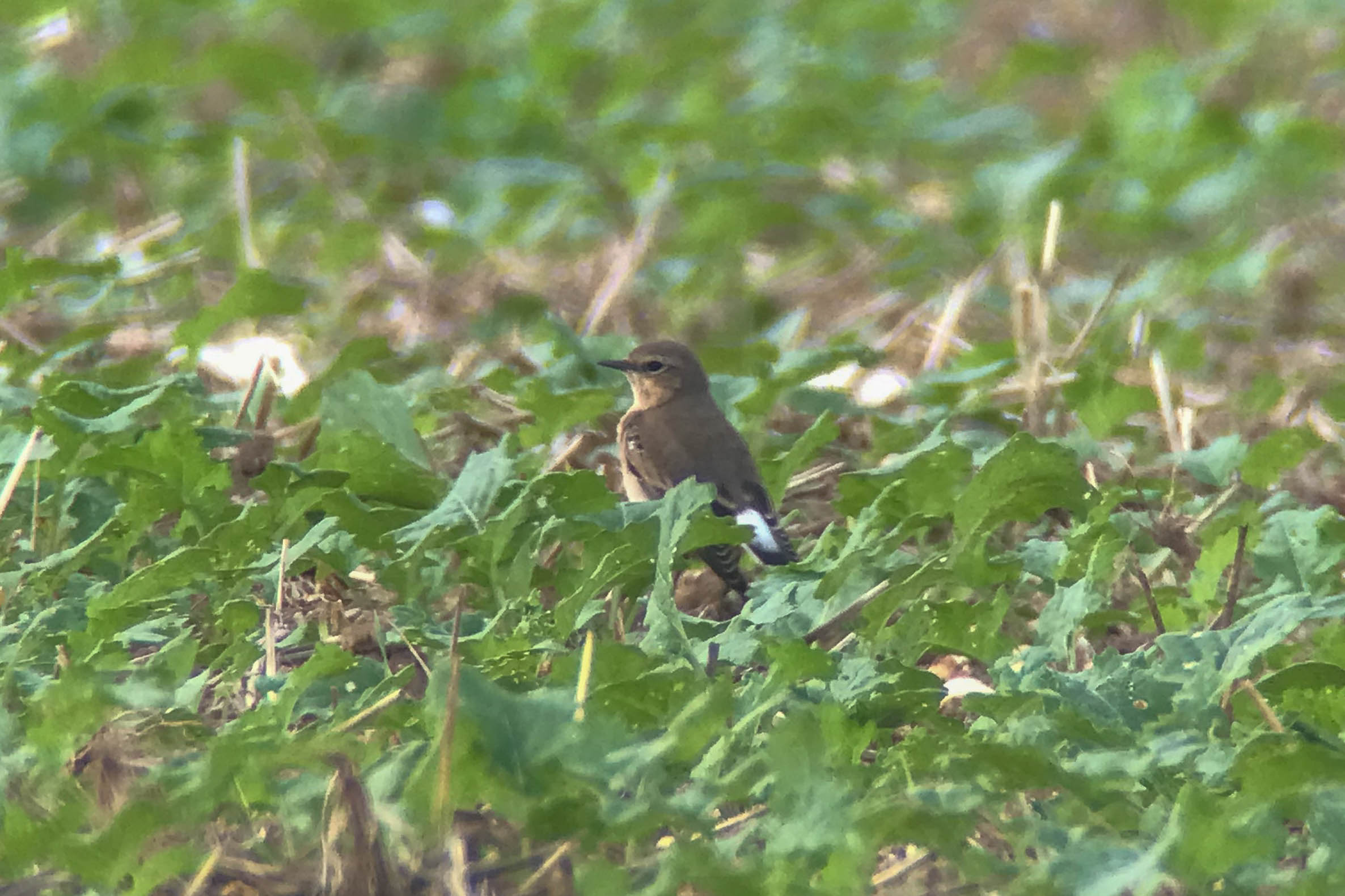
There are lots of geese loafing around on the fields here at the moment, mainly Greylags but there were quite a few Egyptian Geese too – some on the dried up pool west of the track, and more in the grass in front of the east pool.
One white goose over on the far side was a domestic ‘Greylag‘, but another white shape on the near bank of the pool, half-hidden behind the rushes, looked suspiciously taller. Through the scope, we were convinced it was a Spoonbill but it was fast asleep and we couldn’t see much of it. From further down the track, we confirmed our suspicions. We could see it much better now, and it was indeed a lone Spoonbill. At one point it even woke up briefly!
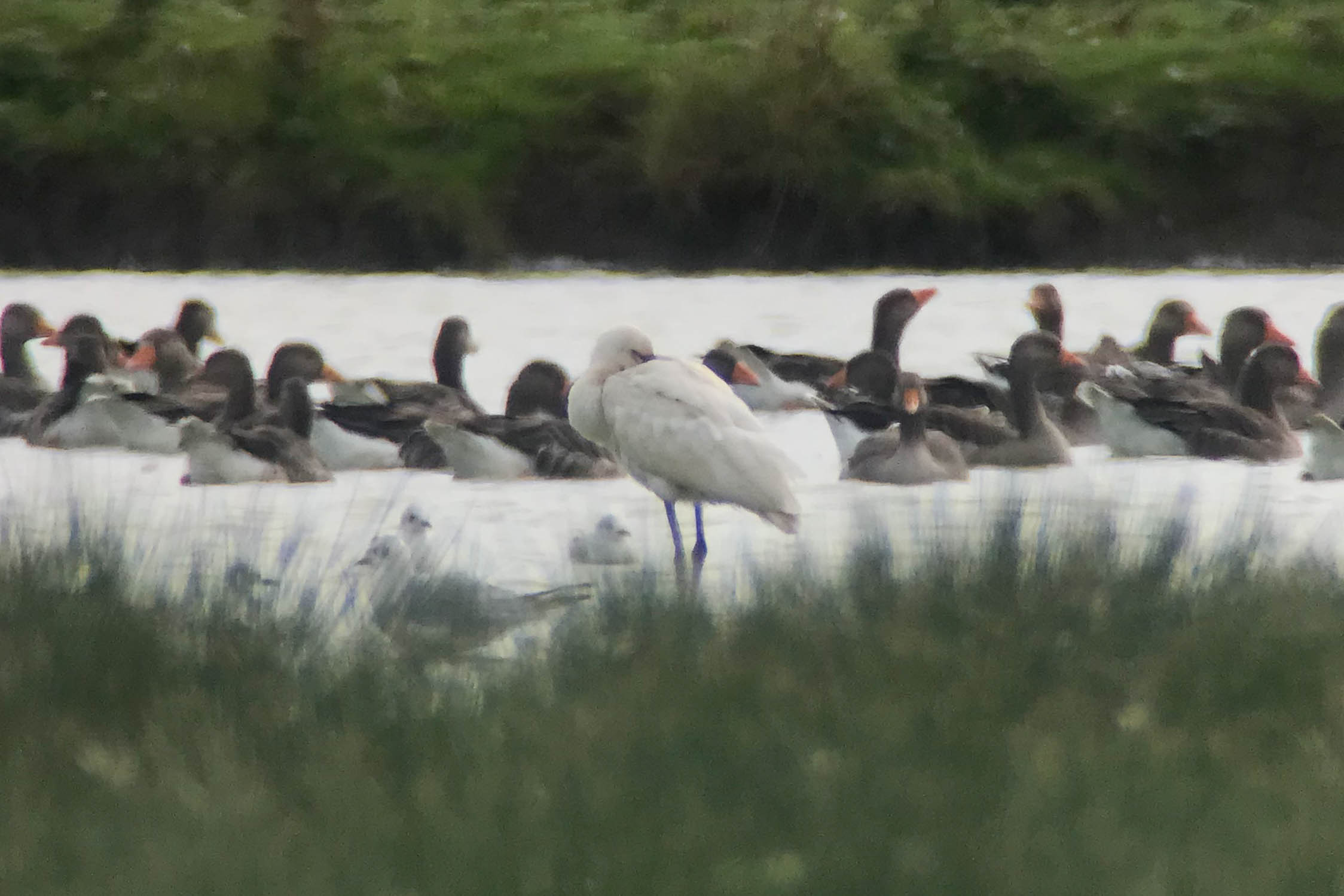
There were quite a few Ruff on the mud here, mostly brown juveniles, and lots of Lapwings, but no sign of any other waders today. From the track, we could see two Barnacle Geese in with the Greylags.
Continuing on, we walked down through the bushes to the seawall. Several butterflies flitted round in the sunshine – a pair of Wall were displaying on the head of a dandelion and a couple of male Common Blues chased past. There were lots of Blackcaps here and a Lesser Whitethroat flew out of the hedge ahead of us and landed in top of a large hawthorn. A Chiffchaff was flycatching from the top too.
As we climbed up onto the seawall, another Lesser Whitethroat came out of the trees beyond, flew across past us and disappeared into the bushes the other side. A Sparrowhawk flew low across the saltmarsh and landed in the trees behind us. We had a nice view of it in the scope. Then it flew back out across the saltmarsh, chased by Black-headed Gulls.
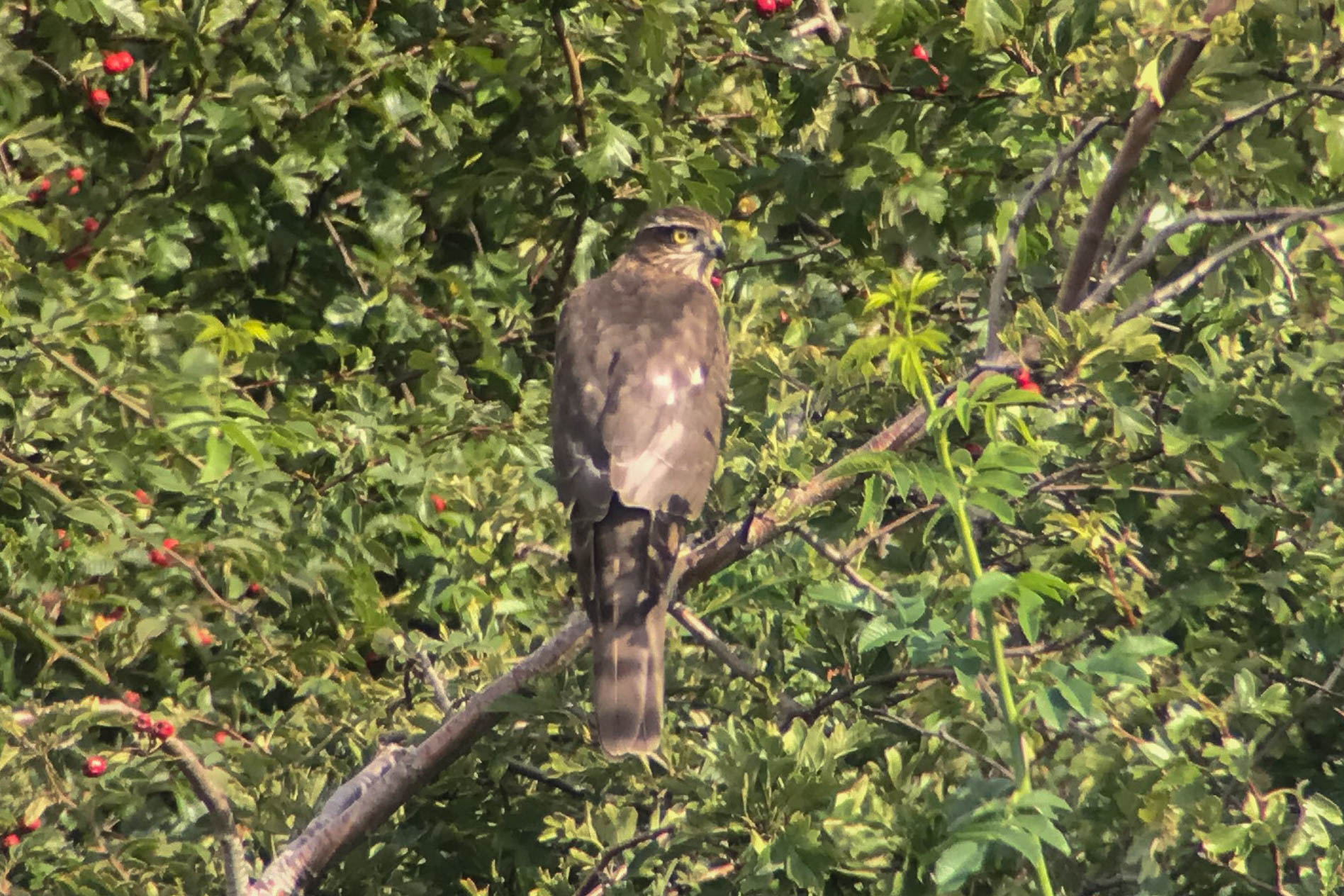
Down to the corner, we stood on the bank and scanned the fields. It was rather quiet here today, but there was a single Stonechat hawking from a small elder along one of reedy ditches. As we walked back, a flock of Long-tailed Tits worked its way along the hedge past us, dragging with it several Blue Tits and Blackcaps.
We had a better view of one of the Barnacle Geese as we passed the Greylags again, very close to the path now. We could see it was carrying a colour ring, yellow ‘L60’. Presumably one of the feral breeders from Holkham Park, which were ringed in number last summer, it has been hanging around here for a while now.
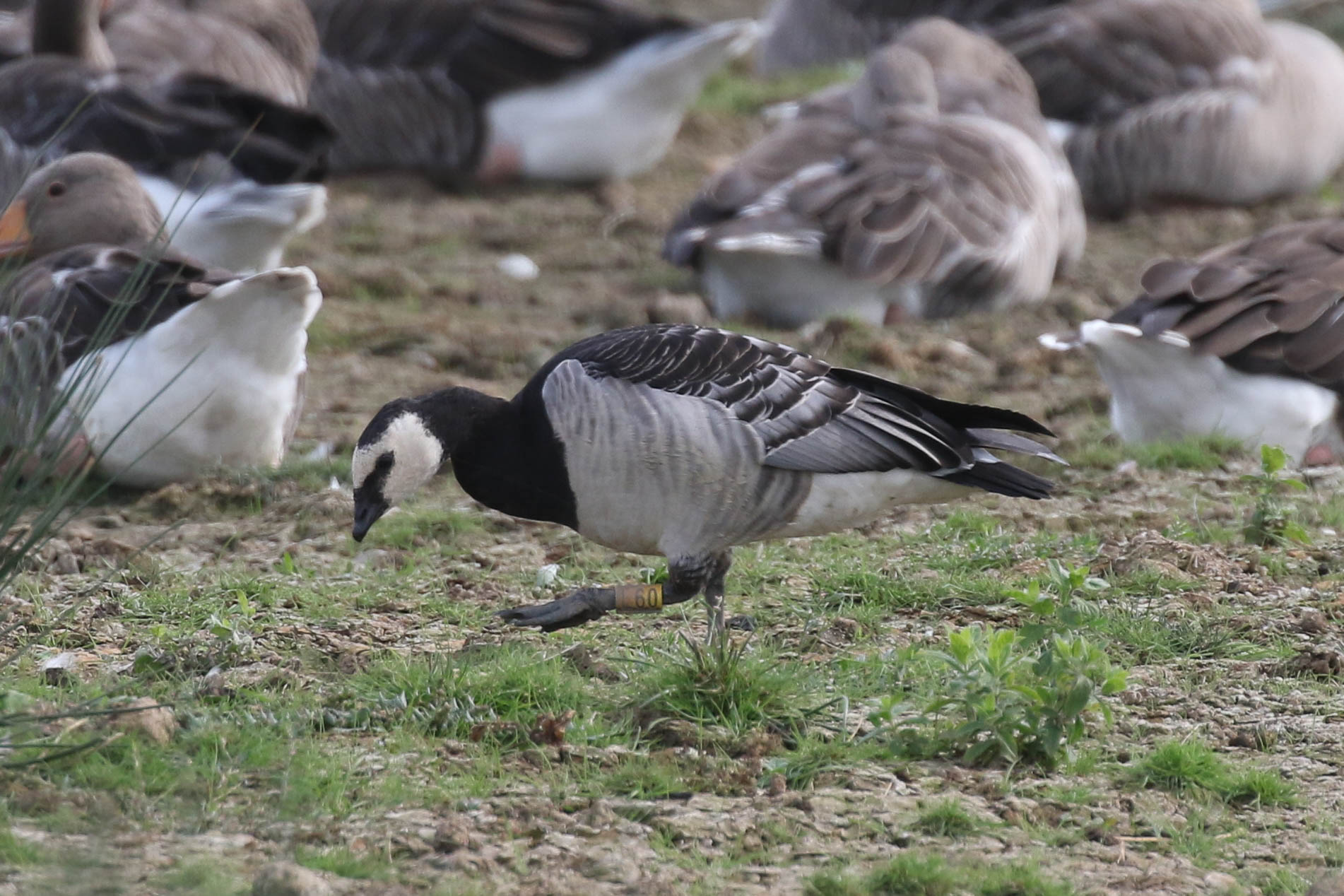
We decided to head round to Holkham for lunch, as we could make use of the picnic tables in the sunshine. Our luck seemed to be in as a parking space right down at the far end of Lady Anne’s Drive became available just as we drove up and as we walked up towards The Lookout there was a single picnic table free. Little did we know what was coming next!
It was warm and sunny now, as we settled down to eat. Several raptors circled up over the grazing marsh – a couple of Marsh Harriers, and five Common Buzzards together. Some people on the table behind us asked us about the raptors, so we pointed out one of the Marsh Harriers to them.
The next time we happened to look back, there was another harrier circling low over the bank right behind us. It was clearly smaller and slimmer than the Marsh Harriers and despite the fact we were looking into the sun, we could see it had a white rump patch, a ringtail. There had been a report of a Hen Harrier over towards Wells earlier but as it turned now we could see it had very narrow wings, particularly the hands. It was definitely not a Hen Harrier – it was a Pallid Harrier!!!
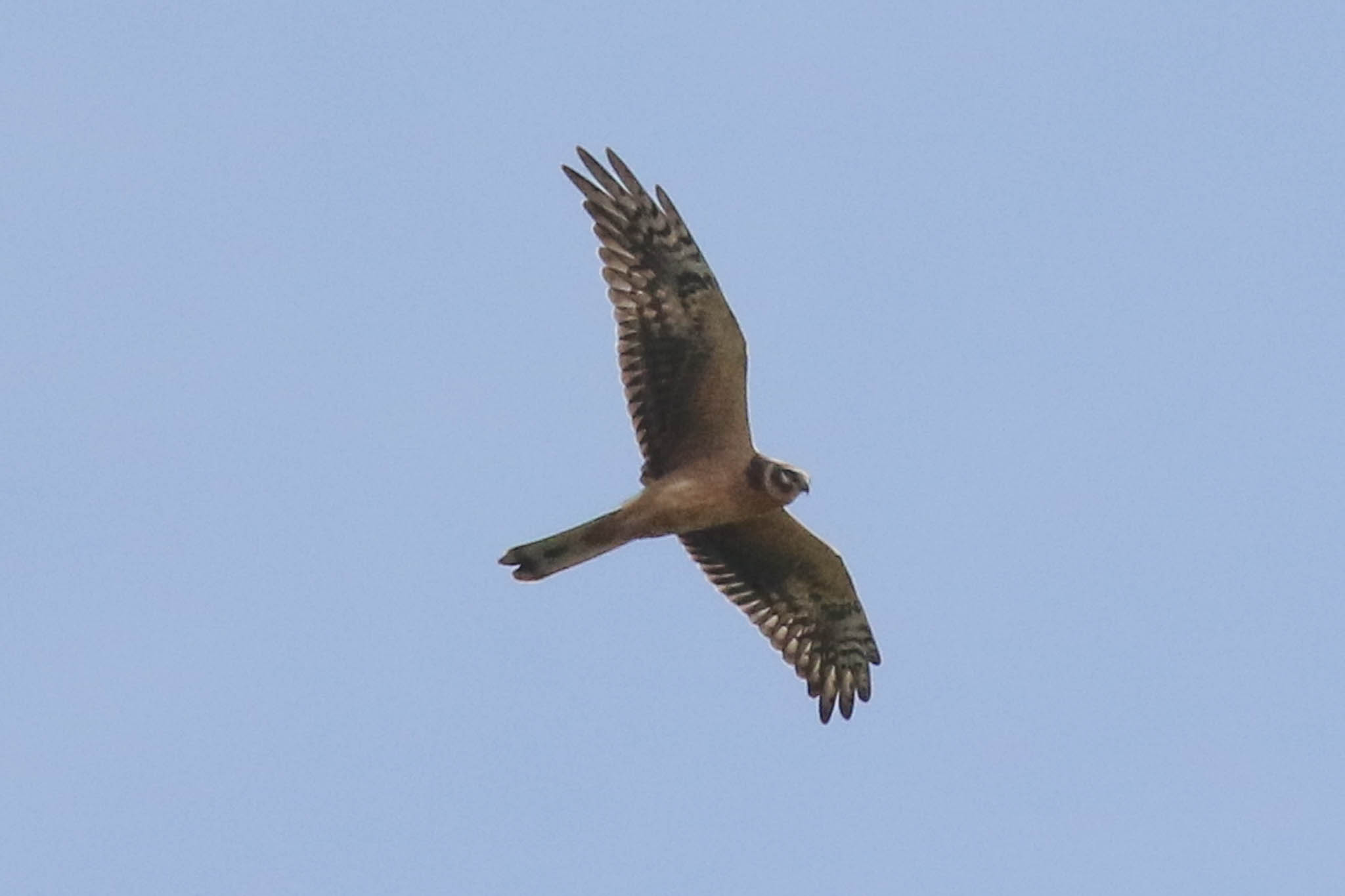
Everyone got onto it, and we watched as it circled and gained height rapidly in the warm air and started to drift away. We tried to follow it, but by the time we got down to Lady Anne’s Drive it had gone quickly off west. It was a juvenile Pallid Harrier and looking at the photos afterwards, we could clearly see the distinctive pale collar and dark ‘boa’ on the sides of the neck.
Pallid Harrier is a rare visitor here, although records have increased in recent years as the breeding range has expanded westwards. They breed in northern and eastern Europe and migrate down to Africa for the winter. What a great surprise, a real bonus. Our luck really was in today!
There had been a large flock of Pink-footed Geese on the grazing marshes earlier but apparently they had been flushed and flown off west. As we finished lunch, we heard them calling and looked round to see them flying back in from behind the trees. They dropped down out on the grazing marsh again, but there was too much vegetation now to see them. The Pink-footed Geese are already starting to arrive from Iceland for the winter – and will hopefully provide the soundtrack for the next five or so months here.
There had been a Greenish Warbler reported from Weybourne Camp this morning, a private site with no access, but at least it hinted that some migrants might still be arriving. We had something else we wanted to do this afternoon, but we decided to chance our arm and have a quick look in Wells Woods first.
As we walked past the boating lake, we could see lots of Little Grebes and a single Tufted Duck out on the water, plus several Coot and a Moorhen along the far edge. Cutting in through the birches, round on the east side of Dell and back out onto the main path, it was all rather quiet. A Great Spotted Woodpecker was calling from the trees by the back of the boating lake and we heard a Siskin calling somewhere over the trees. We stopped to watch a Coal Tit feeding in the pines and had great views of a Jay perched low in the trees in the sunshine, preening.
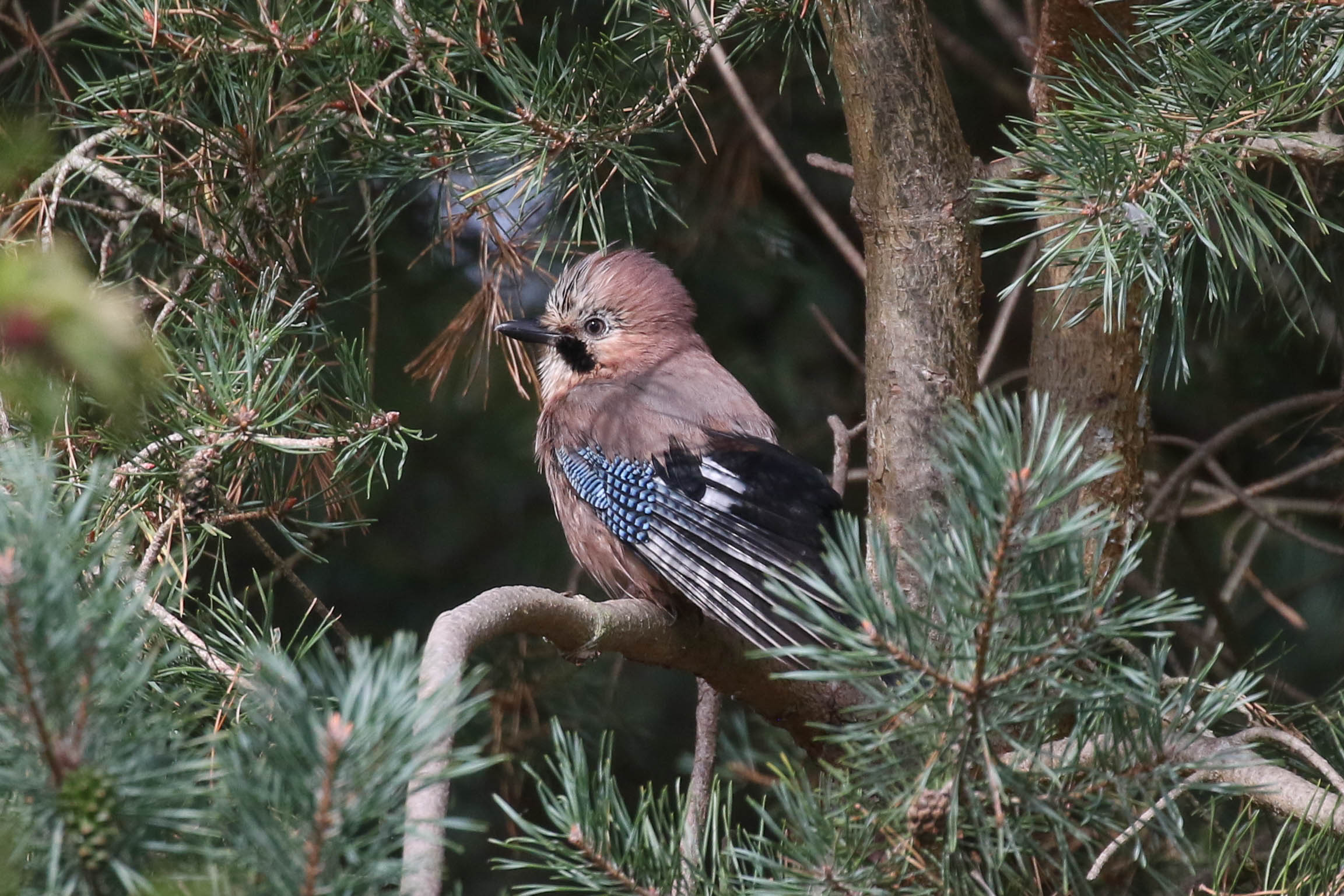
Cutting across to the open area south of the main path, a Small Copper butterfly landed by the path, basking in the sun. Another Jay flew out of the bushes, but there was no hint of any migrants here today.
Back across the track, we made our way round the north side of the Dell. Finally we found a tit flock in the birches, a big group of Long-tailed Tits and several phylloscopus warblers with them. They were mainly Chiffchaffs, but we saw a couple of Willow Warblers with them in the birches too. As the flock moved on, we followed and the Long-tailed Tits lead everything up into the pines where we spotted another smart lemon yellow Willow Warbler.
It didn’t seem we were likely to find anything more unusual in here, so as the flock disappeared into the pines, we made our way back to the car park. We headed south now, a bit of a drive down into the north of the Brecks and our final destination of the day.
We parked by a gate and got out to scan the weedy field the other side. Immediately, we spotted a couple of Stone Curlews half-hidden the vegetation, just what we were looking for. Scanning across the field, we counted 15 on the first pass. But as we stood and watched, they started to get more lively – more and more got up and started preening or walking round in the field feeding. By the end we were up to at least 68 Stone Curlews and almost certainly more were still hidden from view. Wow!
We had some lovely views of the Stone Curlews through the scope – big staring eyes with a yellow iris, a yellow base to the bill and long yellow legs with knobbly knees. The post-breeding gathering of Stone Curlews is one of the highlights of this time of year and always a favourite way to finish the day.
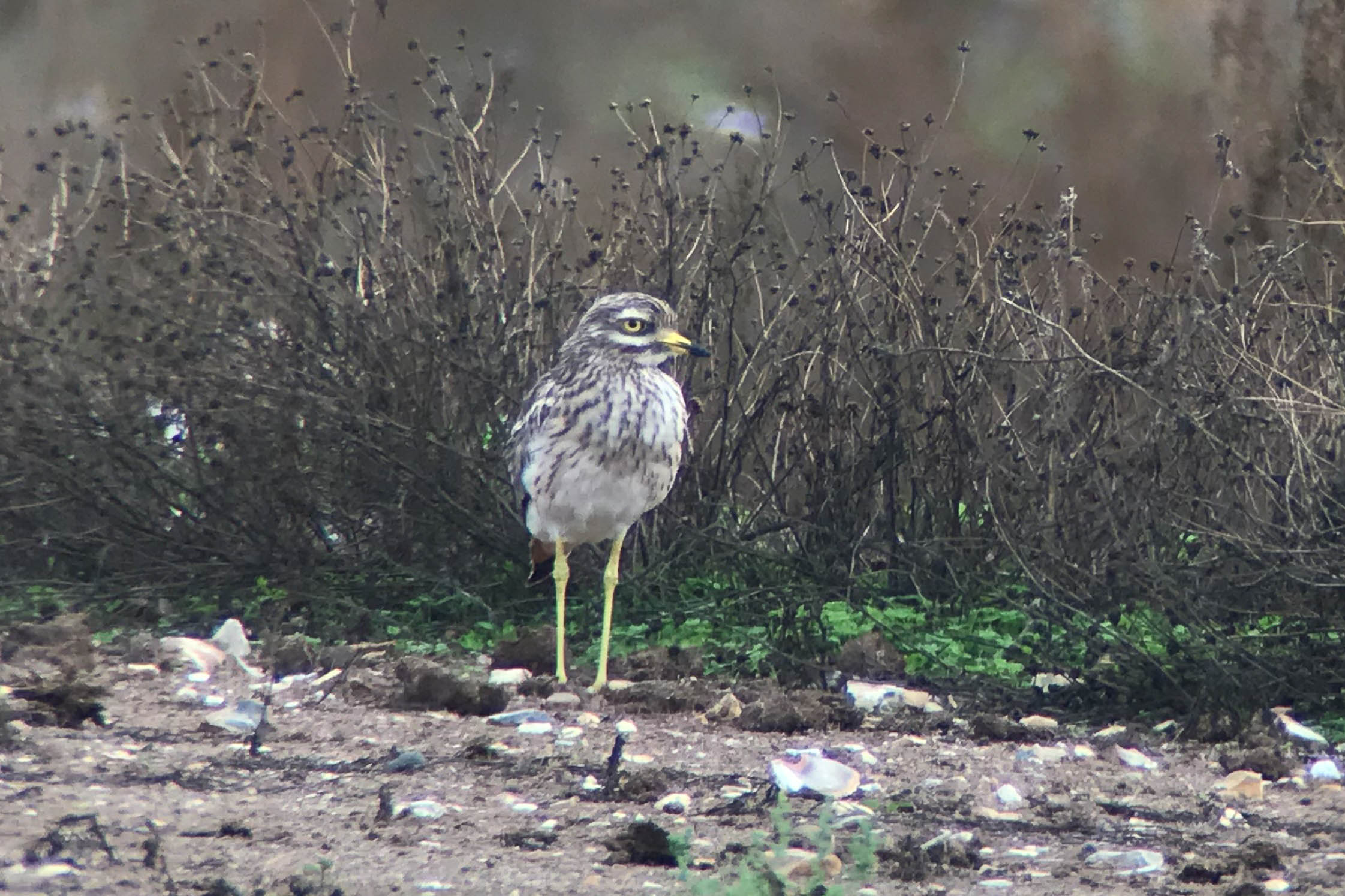
Having drunk our fill of the Stone Curlews, it was time to head back. What a day it had been! And still more to come tomorrow!
















